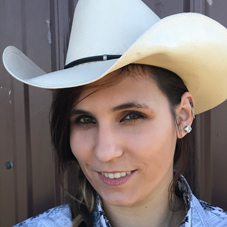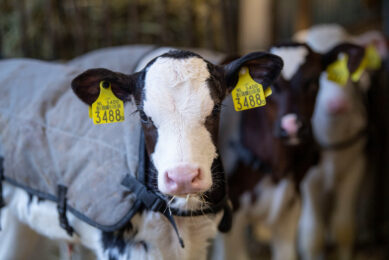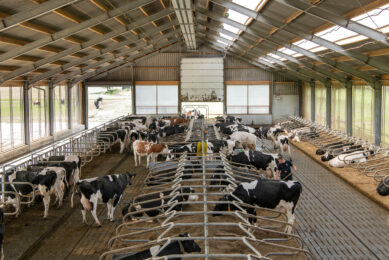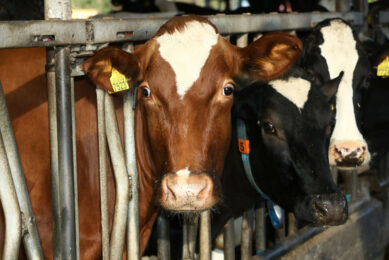Use sand wisely for soil health and cow comfort
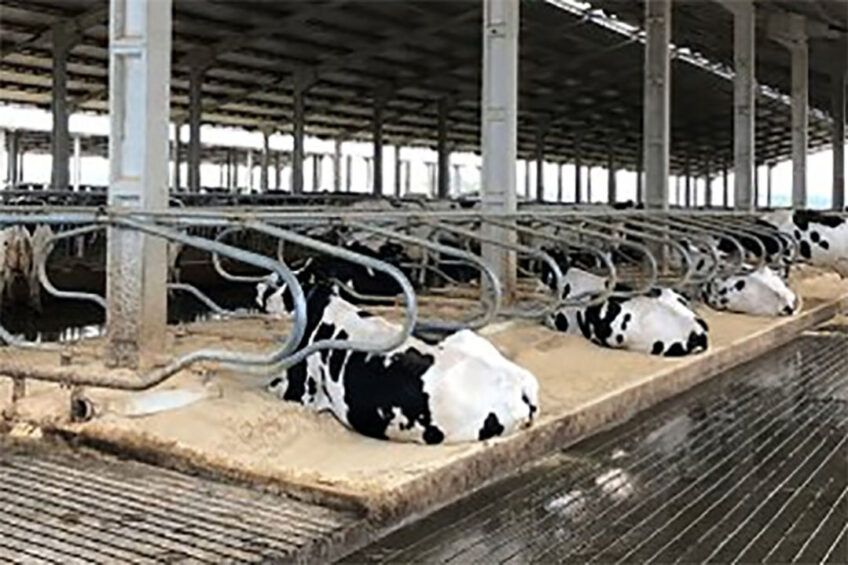
Sand is a popular bedding choice for many farmers. An inorganic material, sand reduces bacterial growth and moisture while keeping cows cooler. But how can farmers use it more effectively?
Sand also has good traction that reduces slippage. Farmers also appreciate sand being recyclable, which can reduce costs in countries where it is more expensive. While it has ideal benefits for the cow, excessive sand is not very friendly to soil health or fertility. Organic bedding, such as straw, sawdust or compost can complement the soil when manure is spread.
These bedding types can be a carbon source for microbes which can be used for composting purposes, says one soil health specialist. This can add value to the manure when it is applied or sold.
Sand does not have this benefit. Not only does it not add nutrients to the soil, but it can also even degrade it. This includes reduced water drainage and fertility by altering the soil’s natural composition. However, if sand is handled effectively, it is possible for farmers to still use this valuable bedding source.
Impact on soil health
How much sand impacts soil depends on the type and the complicated nature of its composition. In some areas, sand can be used strategically to improve drainage and add texture. For some soil types, it will have a negative impact on water movement.
How to prioritise a good, comfortable cubicle
Comfortable cubicles are more than just a place where cows get to lie down.
This has to do with the pore spaces in the constituents that make up the soil. For example, according to the research done by W.H. Gardner, soil particles with smaller pore spaces (such as sand) on the top hold water tightly with poor infiltration. If pore spaces are larger on the top with smaller ones at the bottom, the water flows much better.
There are other concerns as well. One study found as more sand diluted the top 3 inches of soil, the ability of the soil to hold nutrients was decreased. It also found for every 1% soil organic matter was decreased, there was a 51,103 litres of water decrease in the soil’s holding capacity. Additionally, according to this study, sand was found to decrease the quality of manure by diluting nitrogen, potassium, phosphorous and sulphur.
Another point of consideration is how much sand is used versus how much farmers think they are using. The common industry recommendation is no more than 150 to 200 mm. Even when following this recommendation, some dairies are wasting more than others. While many operations invest in sand lanes and other systems to recycle and reclaim sand, it is impossible to reclaim it all.
First certified regenerative organic dairy farm in the US
Alexandre Family Farm is the first certified regenerative organic dairy farm in the United States.
Using sand lanes
For farms using sand lanes, the amount of sand making its way to the field depends on 2 factors, according to Dr Joseph Harner, professor of agricultural engineering at Kansas State University. “There is an optimal particle size that results in better settling separation of the sand from the manure waste stream,” he says.
A fine sand, sometimes called sugar sand, would be much different than a washed river sand.”
A good deal of sand can also end up being flushed through and making its way to the lagoon. Harner says one of the original estimates of dairies using 18 kg of sand per stall per day which would indicate about 6.57 tonnes of sand annually.
In dairies with good sand lane system, there could be a 95% rate of sand recovery which would be equivalent to a 328 kg loss annually. This is potentially equivalent to 3 mm from each stall making its way to the lagoon every week. If managed properly, this type of rate is acceptable.
Where producers get into trouble is when all of the manure solids are going to the same fields with the liquids being pumped onto another and they’re not rotated on an annual basis,” Harner explains. “This creates uneven distribution of sand being added to soils.”
Another point of consideration is the impact on equipment. Sand is very abrasive despite its small particle size. It can be harsh on equipment used to spread liquid or slurry manure and potentially plug tubes and moving parts.
Reducing sand bedding solutions
There are multiple ways sand can be used in an effective and responsible manner. The first is not to over bed pens beyond the recommendations. One way to accomplish this, and reduce sand even more, is to add a type of stall mat or mattress underneath.
Can floor type affect cattle performance?
Although much work has been done to investigate the effects of various environmental factors on animal health and performance, seldom was the effect of the house floor taken into account.
Promat Inc is an international company specializing in cow mattress and flooring solutions. A popular product for them is the Packmat which allows farmers to continue using sand bedding at reduced levels without sacrificing on cow comfort.
Matt Thiel, the company’s international technical product manager, explains that their mats allow producers to reduce 50% on average. This also cuts down on the time that is needed to groom and clean stalls without sacrificing the cows’ time spent laying down.
Something greatly changing the dairy industry is the use of stall mats that reduce how much sand needs to be used,” he says.
Advanced new technologies that allow stalls and mattresses to be customised to cow size are a part of this. Companies like Promat continue to analyse how their systems are doing and make changes for improvement as soon as possible.
He has seen his own company grow and expand as alternative bedding solutions have been made, noting they have gone from offering only 2 mattresses to offering over 25 different mattress products. “I’ve been in the business now for 23 years now,” says Matt, “and today we’re doing some great things on some dairies.”
Join 13,000+ subscribers
Subscribe to our newsletter to stay updated about all the need-to-know content in the dairy sector, two times a week.


